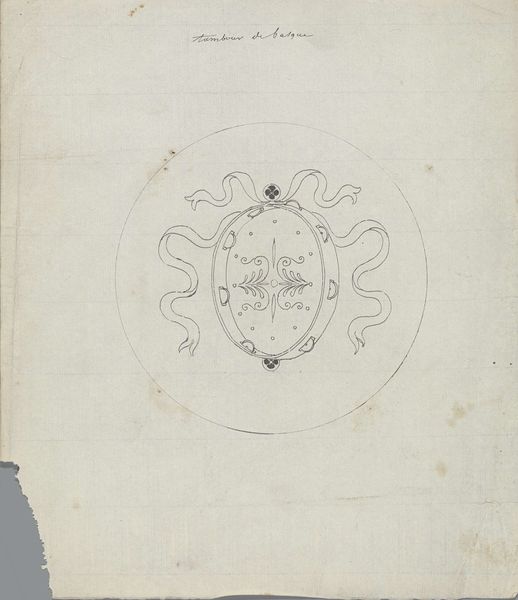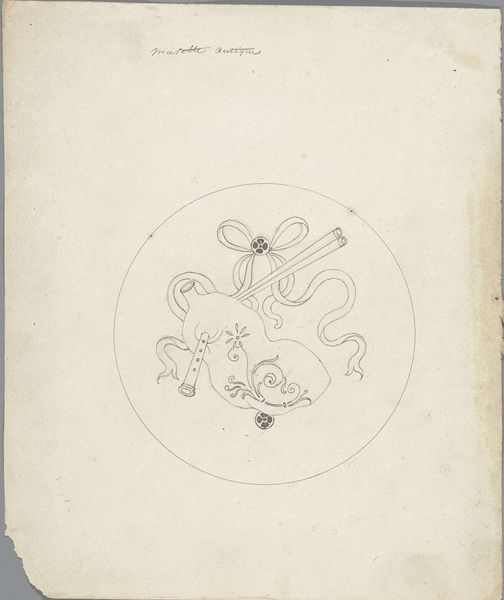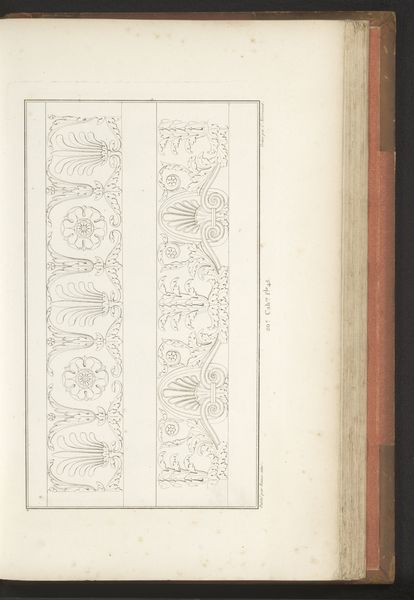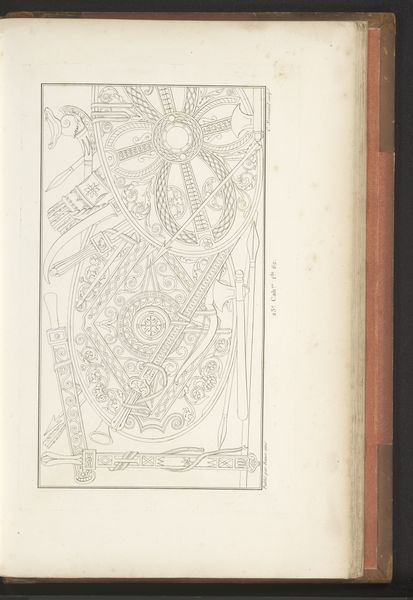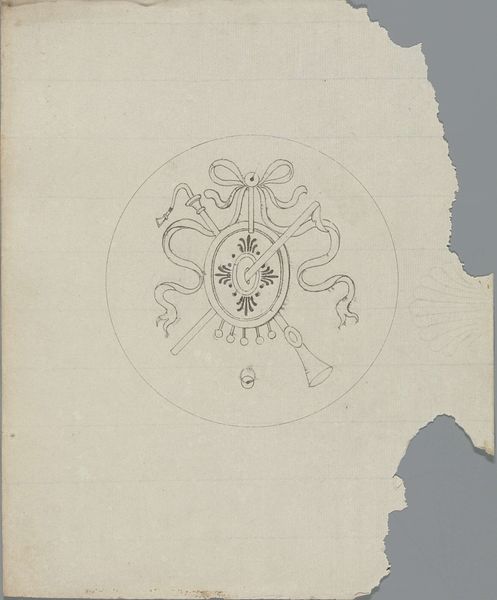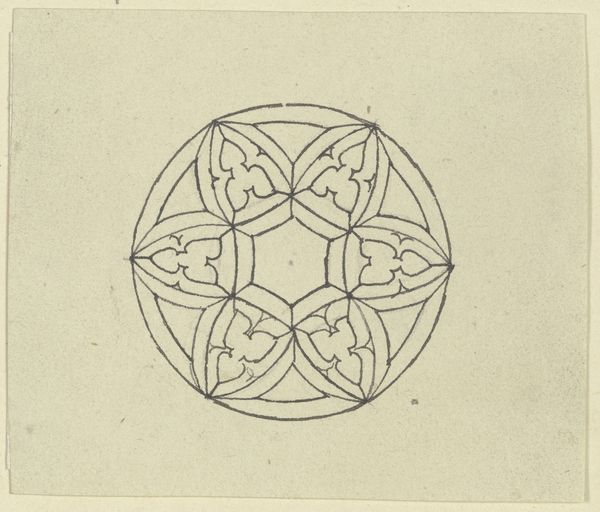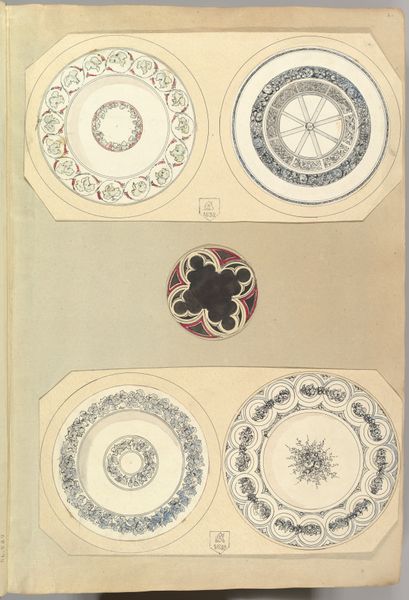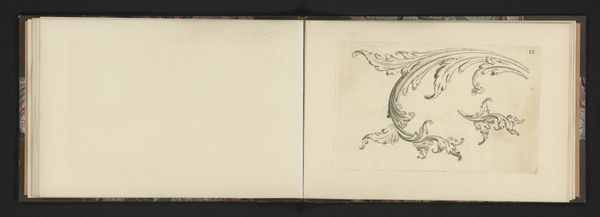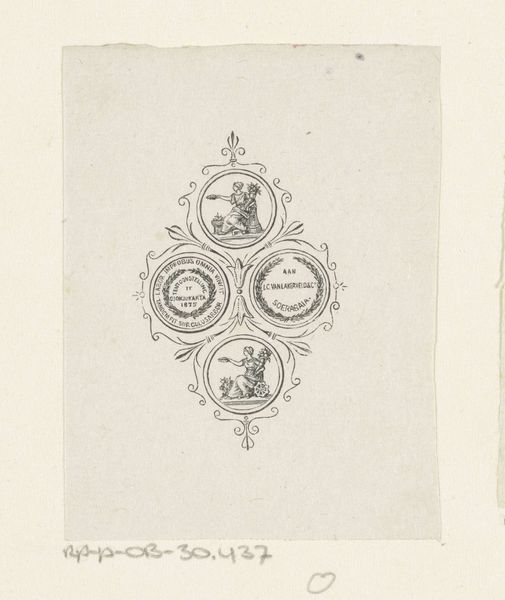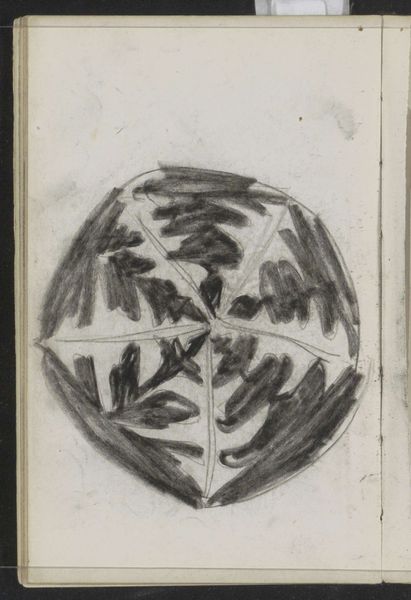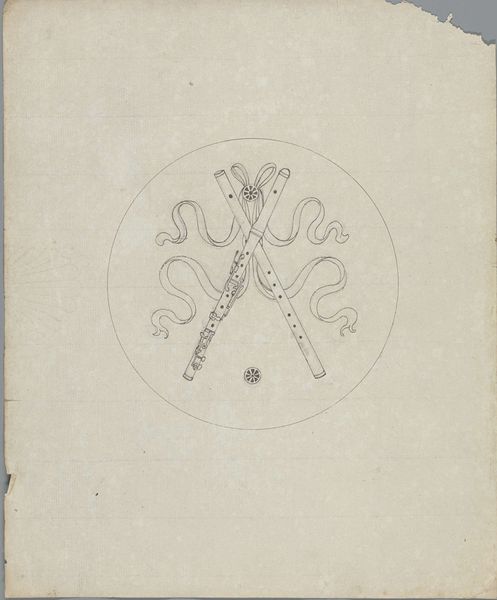
Ontwerp voor een gedenkbord ter gelegenheid van de inhuldiging van Koningin Wilhelmina 1898
0:00
0:00
drawing, graphic-art, paper, pencil
#
drawing
#
graphic-art
#
toned paper
#
light pencil work
#
art-nouveau
#
shading to add clarity
#
pen sketch
#
old engraving style
#
paper
#
personal sketchbook
#
pen-ink sketch
#
pencil
#
pen work
#
sketchbook drawing
#
decorative-art
#
sketchbook art
Copyright: Rijks Museum: Open Domain
Curator: Immediately, I see a celestial quality to it; almost like an astrolabe charting a queen's ascent. Editor: That’s an interesting take. We are looking at "Ontwerp voor een gedenkbord ter gelegenheid van de inhuldiging van Koningin Wilhelmina" (Design for a commemorative plate on the occasion of the inauguration of Queen Wilhelmina), created by Carel Adolph Lion Cachet in 1898. It’s a drawing rendered in pencil and pen on paper, held here at the Rijksmuseum. Curator: Indeed. Look at how the central geometric design seems to radiate outward, surrounded by stylized fruit and leaves. The use of black, white, and gold reminds me of royal colors, almost Byzantine in its symbolism of power and divinity. The yellow fruit are especially intriguing; oranges, perhaps, alluding to the House of Orange-Nassau? Editor: Possibly. Symbolism connected to the House of Orange would certainly be pertinent. The work clearly resonates with Art Nouveau, and it echoes the decorative style typical for commemorative objects designed to emphasize the monarchy. Its existence begs the question, though; would a sketch such as this been considered too modern? Would there have been significant resistance to adopting something so different from what many may have perceived as tradition? Curator: I agree; its stylization speaks directly to Art Nouveau’s efforts to rejuvenate design, imbuing everyday objects with a renewed symbolic language. What’s interesting here is the contrast between that modern style and the enduring imagery of monarchy. It seems intended to forge a visual bridge, updating tradition for a new era. And who would not be receptive to something new when their monarch is also new? Editor: Very insightful. I now look at this simple design as part of a far larger discussion about tradition and innovation, with these elements coexisting in times of change. Curator: And how art objects often serve to navigate and shape those cultural shifts.
Comments
No comments
Be the first to comment and join the conversation on the ultimate creative platform.
